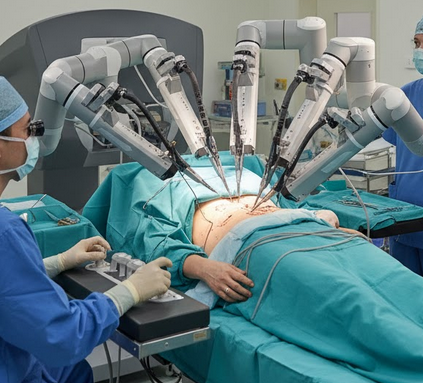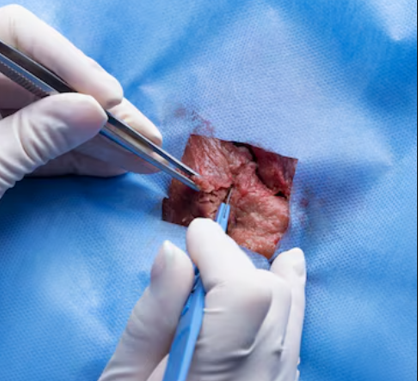Treatment Overview
The Robotic-Assisted Laparoscopic Ovarian Cystectomy Program in Korea represents a cutting-edge advancement in minimally invasive gynecologic surgery. This sophisticated procedure integrates robotic precision with laparoscopic techniques, enabling surgeons to remove ovarian cysts with unmatched accuracy and gentleness. By combining 3D visualization, tremor filtration, and enhanced dexterity, robotic-assisted surgery ensures optimal ovarian tissue preservation and fertility outcomes.
Ovarian cysts are common benign growths that may cause pelvic pain, hormonal changes, or fertility issues if left untreated. While some cysts resolve naturally, complex or persistent cysts require surgical intervention. The robotic-assisted laparoscopic approach allows surgeons to operate with superior control and precision, minimizing trauma to the surrounding ovarian tissue while ensuring complete cyst removal.
Korea has emerged as a global leader in robotic gynecologic surgery, with top institutions such as Samsung Medical Center, Asan Medical Center, Severance Hospital, CHA Bundang Women’s Hospital, and Ewha Womans University Medical Center utilizing advanced robotic systems like the da Vinci Surgical System. These hospitals combine world-class technology with specialized expertise to deliver safe, fertility-preserving outcomes for women worldwide.
Purpose & Benefits
The main objective of robotic-assisted laparoscopic ovarian cystectomy is to remove ovarian cysts precisely while safeguarding reproductive potential and minimizing recovery time. The robotic platform enhances surgeon performance through high-definition 3D vision and microscale instrument control.
Key benefits include:
- Superior Precision: Robotic arms eliminate human tremor, allowing precise dissection of cysts.
- Fertility Preservation: Protects healthy ovarian tissue and blood supply.
- Minimal Scarring: Small incisions lead to excellent cosmetic outcomes.
- Less Blood Loss: Controlled movements reduce intraoperative bleeding.
- Quicker Recovery: Patients often resume normal activities within 1–2 weeks.
- Enhanced Visualization: 3D imaging allows detailed identification of cyst boundaries.
- Reduced Complications: Lower rates of infection and adhesions compared to open surgery.
This advanced robotic approach combines technology, safety, and aesthetics, making it a preferred option for women seeking high-precision ovarian surgery in Korea.
Ideal Candidates
Robotic-assisted laparoscopic ovarian cystectomy is suitable for women requiring surgical cyst removal who prioritize safety, fertility preservation, and rapid recovery. Ideal candidates include:
- Women with persistent or recurrent ovarian cysts not responding to medication.
- Patients with large, complex, or multiloculated cysts visible on imaging.
- Women experiencing pelvic pain, bloating, or hormonal irregularities due to cysts.
- Patients with endometriotic or dermoid cysts needing delicate dissection.
- Women planning for future pregnancy or fertility preservation.
Before surgery, Korean specialists conduct a thorough diagnostic work-up, including ultrasound, MRI, hormone panels, and sometimes tumor marker tests, to ensure a personalized and safe treatment strategy.
Possible Risks & Complications
Robotic-assisted laparoscopic ovarian cystectomy in Korea is extremely safe, but as with any surgical procedure, some minor risks may occur:
- Mild postoperative pain or transient nausea.
- Rare cases of infection or bleeding.
- Small chance of cyst recurrence, depending on cyst type (especially endometriomas).
- Temporary shoulder discomfort from laparoscopic gas.
- Minimal anesthesia-related risks, managed by experienced anesthesiologists.
Korea’s robotic surgical centers follow international safety protocols, ensuring all risks are minimized through rigorous preoperative planning and state-of-the-art surgical monitoring.
Techniques Used
Robotic-assisted laparoscopic ovarian cystectomy combines the advantages of robotic engineering and laparoscopic access. Key techniques include:
- da Vinci 3D High-Definition Vision System: Offers 10x magnified 3D views.
- EndoWrist Robotic Instruments: Allow 540° movement for unmatched precision.
- Low-Energy Bipolar Coagulation: Minimizes tissue damage and bleeding.
- Ovarian Capsule Reconstruction: Microsurgical suturing restores natural ovarian anatomy.
- Fertility-Sparing Protocols: Protect ovarian reserve and hormone production.
These innovations enable surgeons to remove cysts while keeping ovarian tissue and reproductive function intact — a key advantage for women of childbearing age.
Recovery & Aftercare
Recovery following robotic-assisted laparoscopic ovarian cystectomy in Korea is typically rapid and comfortable. Most patients stay in the hospital for 1–2 days and resume daily activities within a week.
Standard postoperative care includes:
- Pain relief using mild analgesics.
- Early mobilization within hours of surgery.
- Follow-up ultrasound after 4–6 weeks to confirm healing.
- Hormonal evaluation if fertility preservation is desired.
- Dietary and activity guidance from the medical team.
Korean hospitals emphasize holistic recovery, providing post-surgical rehabilitation, nutritional counseling, and fertility monitoring for long-term wellness.
Results & Longevity
Robotic-assisted laparoscopic ovarian cystectomy in Korea offers lasting results with minimal recurrence and excellent cosmetic outcomes. Most patients experience:
- Relief from chronic pelvic pain.
- Restoration of menstrual regularity and hormonal balance.
- Preservation of ovarian function and fertility.
- Virtually invisible scarring from small incisions.
Korean medical studies report high ovarian function preservation rates and superior patient satisfaction compared to conventional laparoscopic or open techniques.
Treatment Process in Korea
The treatment journey at Korean hospitals typically follows these steps:
- Initial Consultation & Imaging Evaluation.
- Preoperative Testing – bloodwork, anesthesia review, and cyst assessment.
- Robotic-Assisted Surgery under general anesthesia.
- Postoperative Monitoring for 24–48 hours.
- Follow-Up Visit for pathology review and hormonal assessment.
This patient-focused system ensures precision, comfort, and transparent communication throughout the treatment process.
Cost Range
The cost of robotic-assisted laparoscopic ovarian cystectomy in Korea varies depending on cyst complexity and hospital choice:
- Standard Laparoscopic Cystectomy: ₩4,000,000 – ₩6,000,000 KRW ($3,000 – $4,500 USD)
- Robotic-Assisted Laparoscopic Cystectomy: ₩8,000,000 – ₩12,000,000 KRW ($6,000 – $9,000 USD)
These costs reflect Korea’s high-end technology, surgical precision, and globally recognized medical standards.
Popular Clinics for Robotic-Assisted Laparoscopic Ovarian Cystectomy in Korea
- Samsung Medical Center – Global leader in robotic gynecology.
- Asan Medical Center – Advanced fertility-sparing robotic surgeries.
- Severance Hospital (Yonsei University) – Expertise in complex ovarian surgeries.
- CHA Bundang Women’s Hospital – Specializes in reproductive microsurgery and IVF support.
- Ewha Womans University Mokdong Hospital – Personalized robotic gynecologic care with holistic follow-up.




